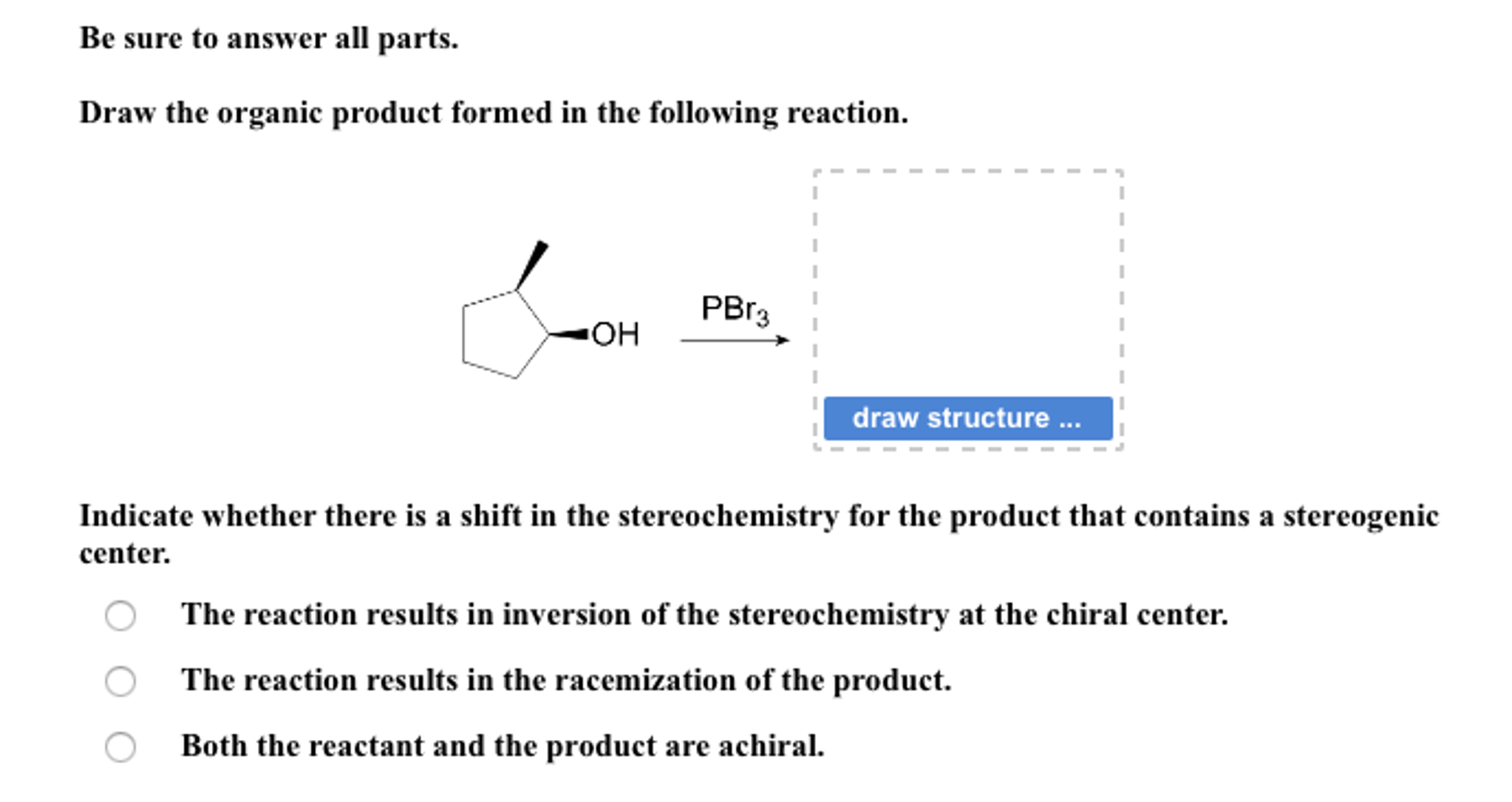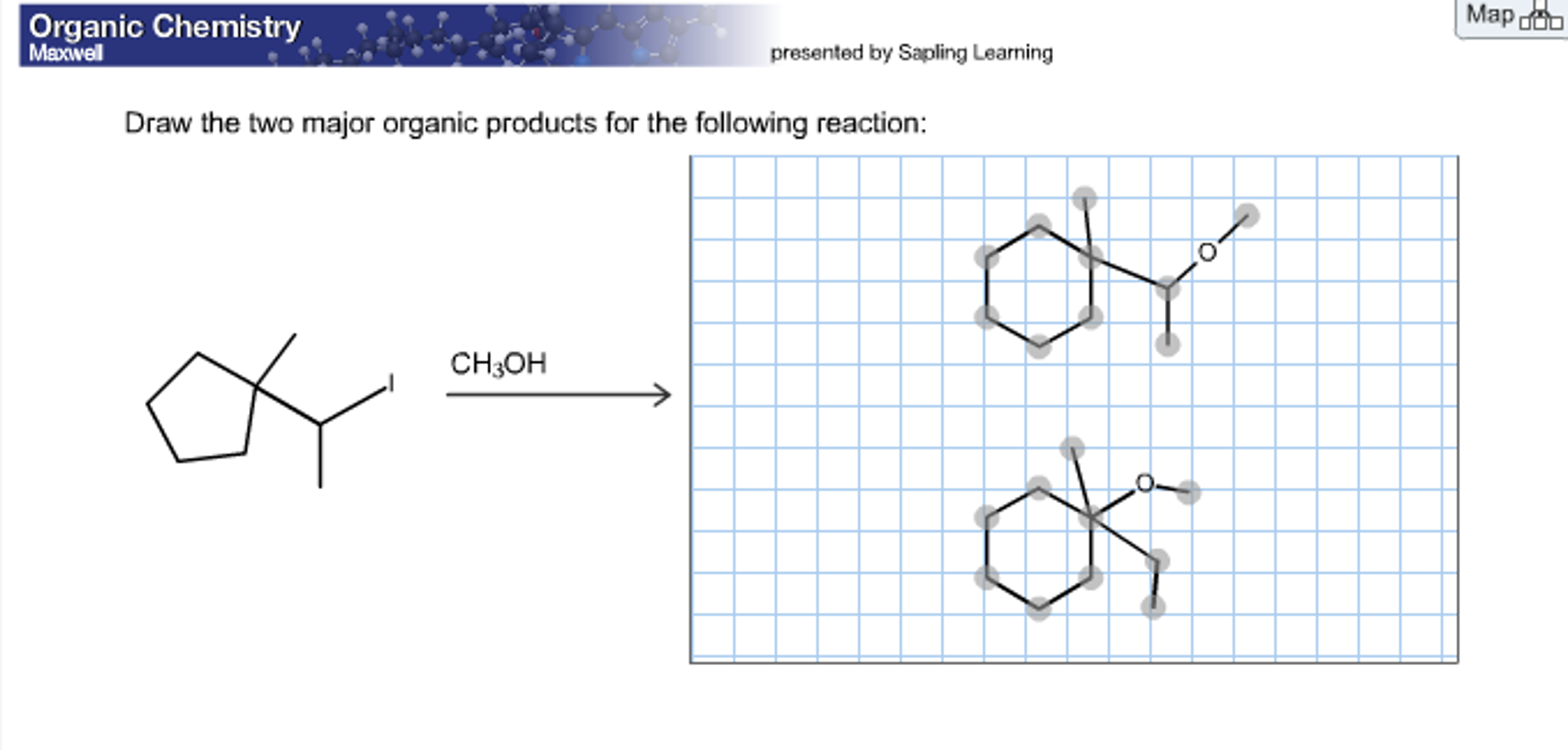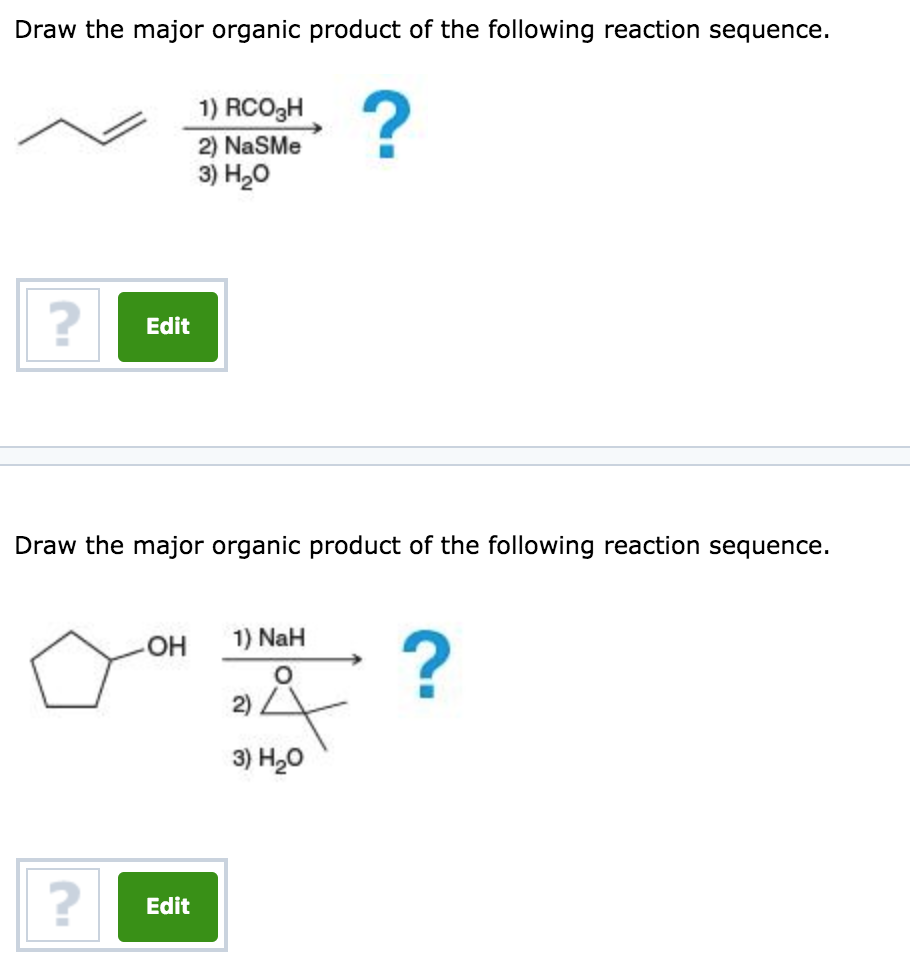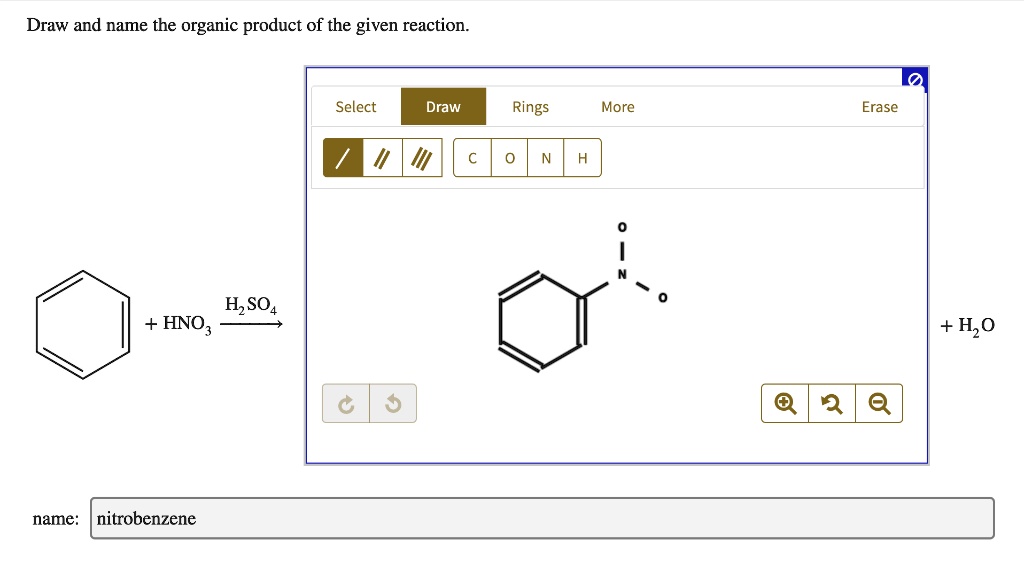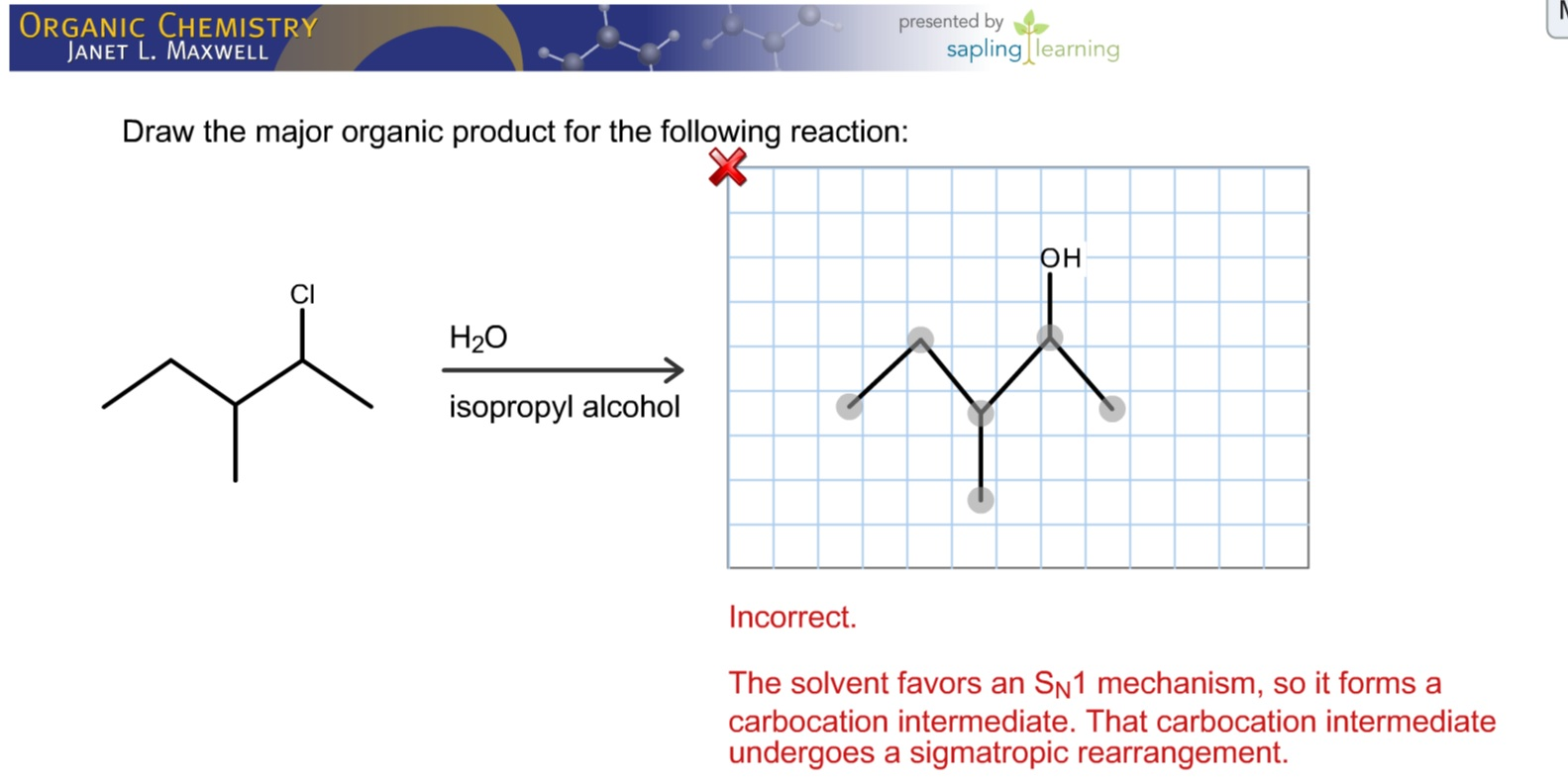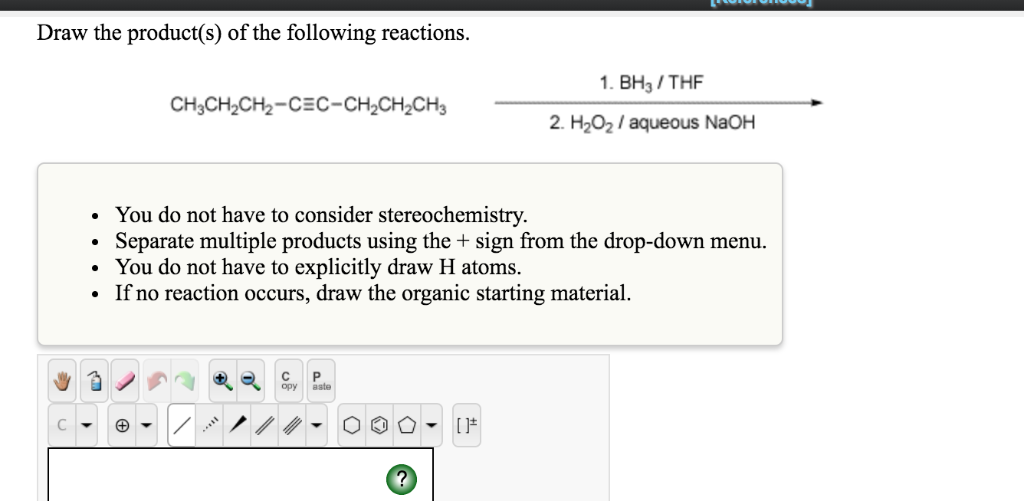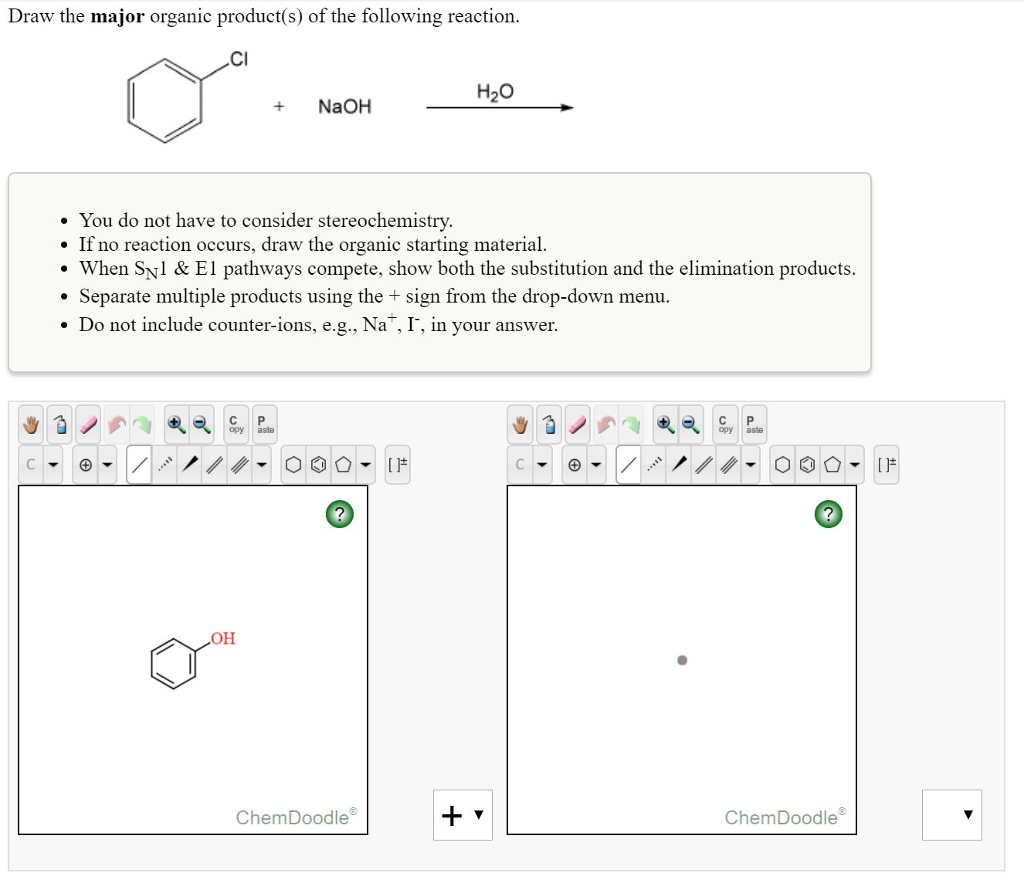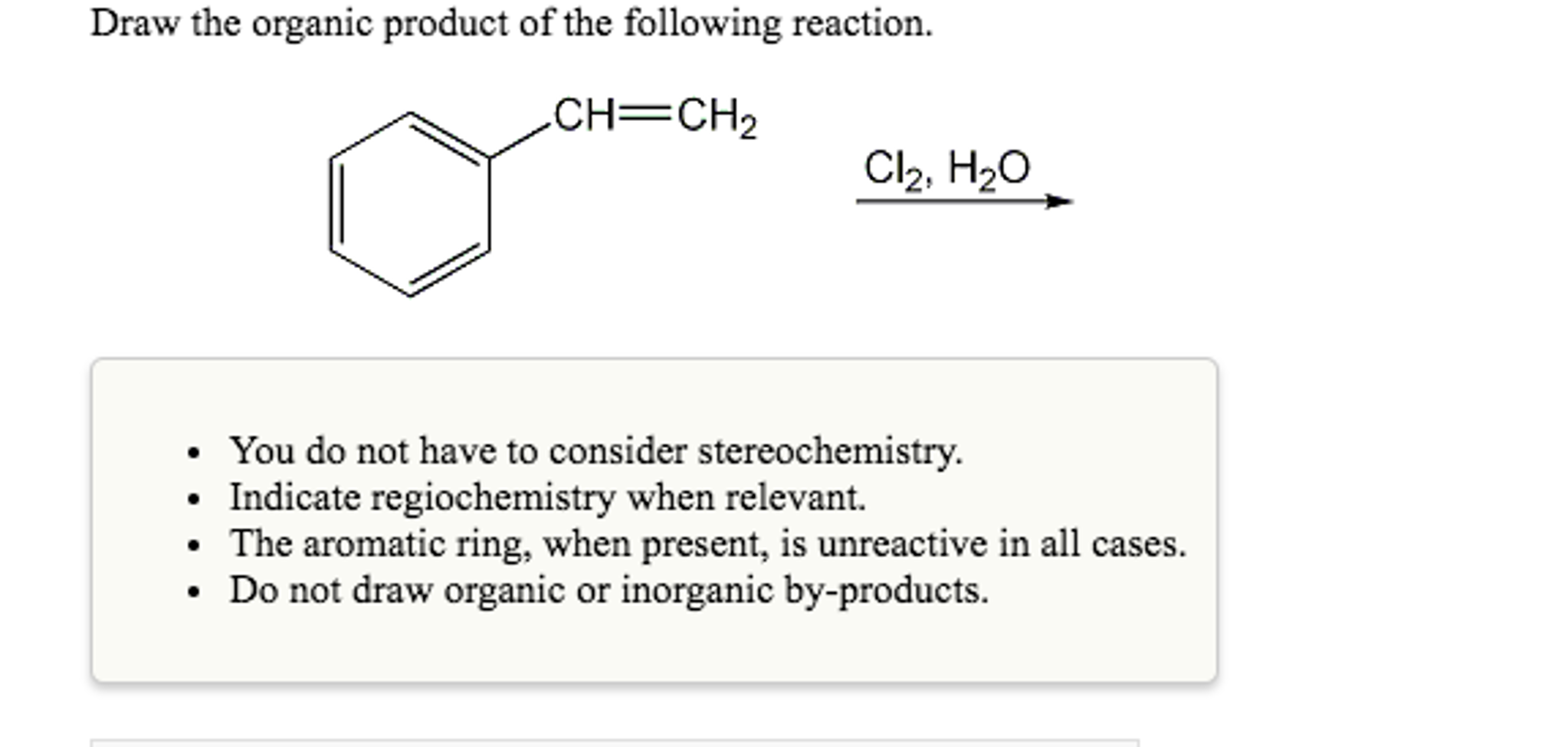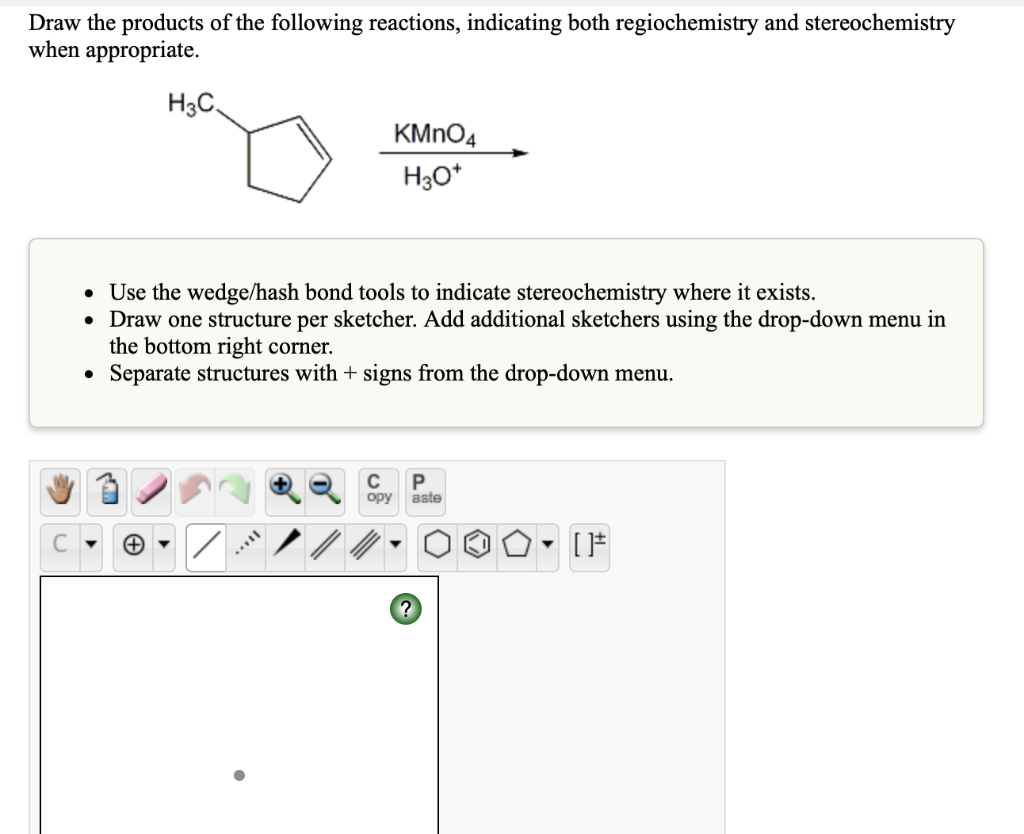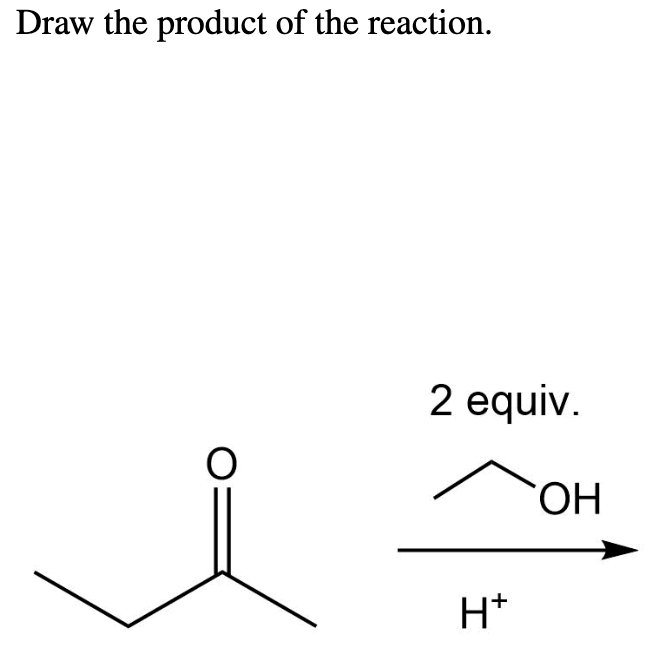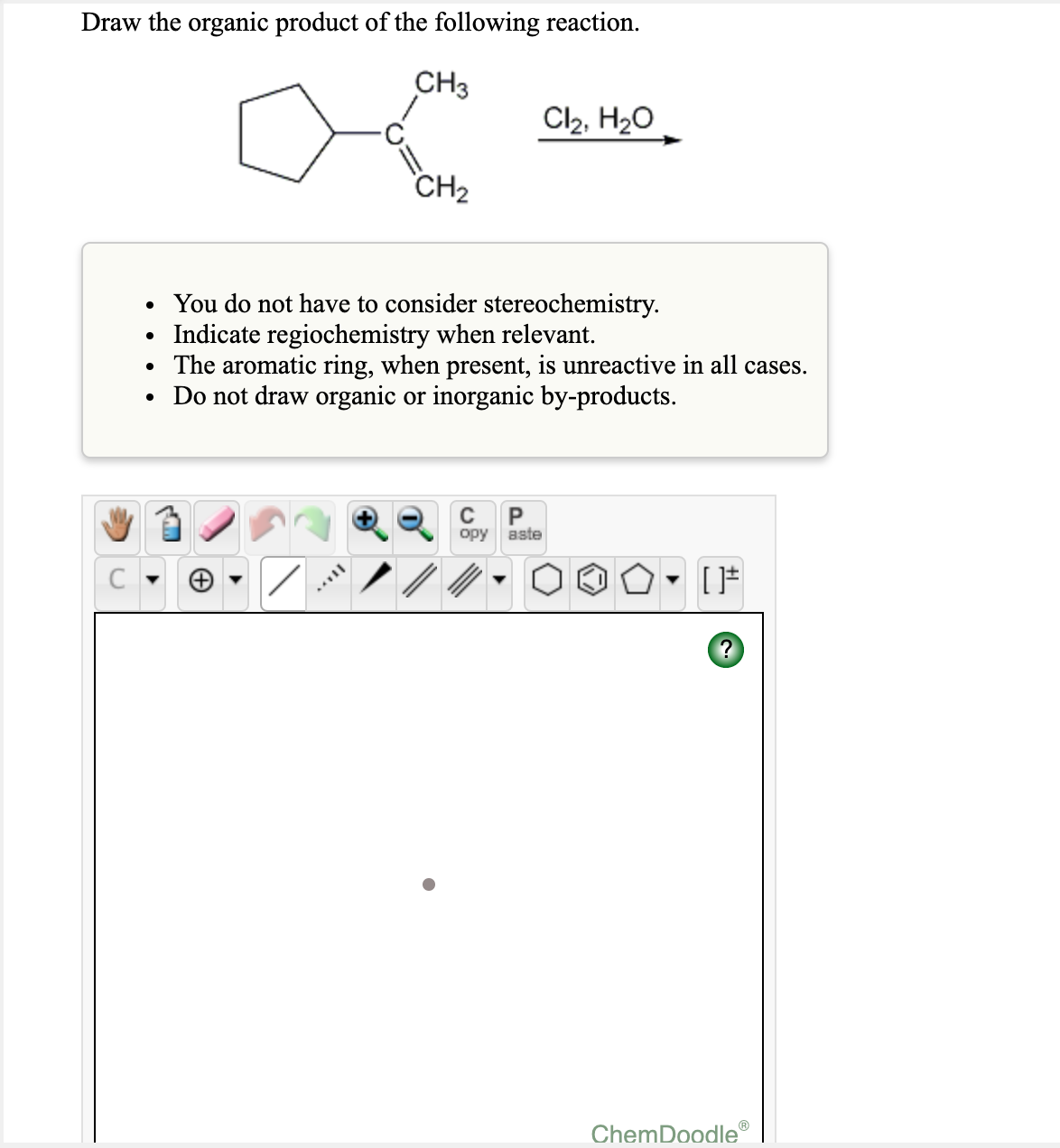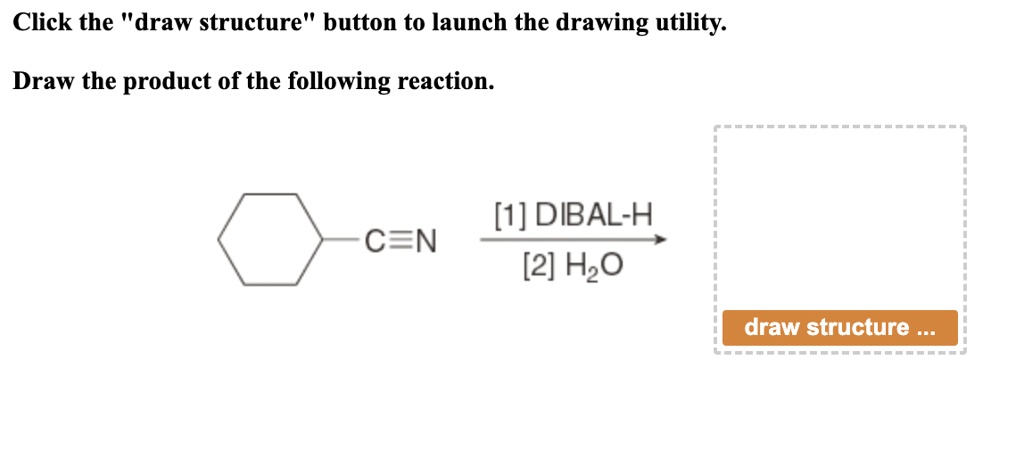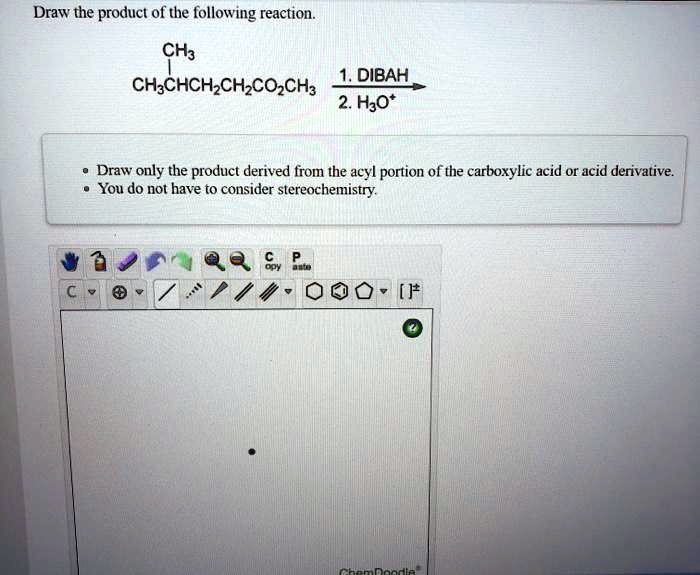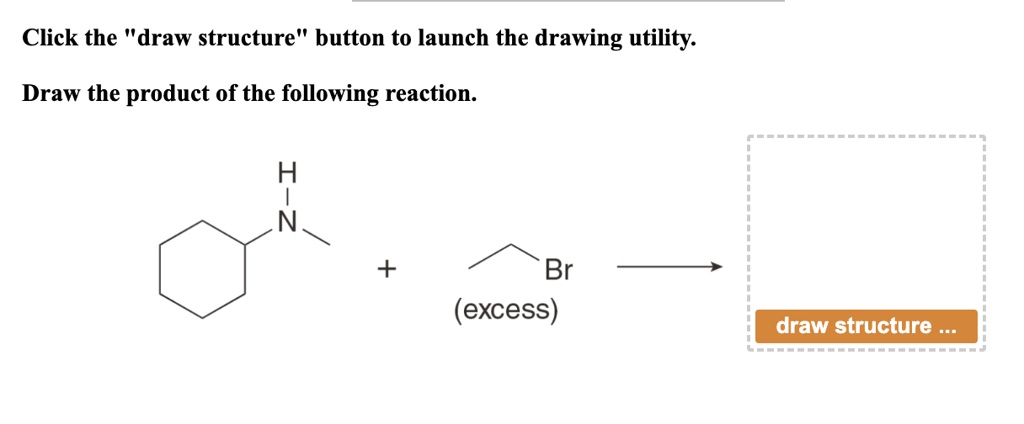Draw The Product For The Following Reaction
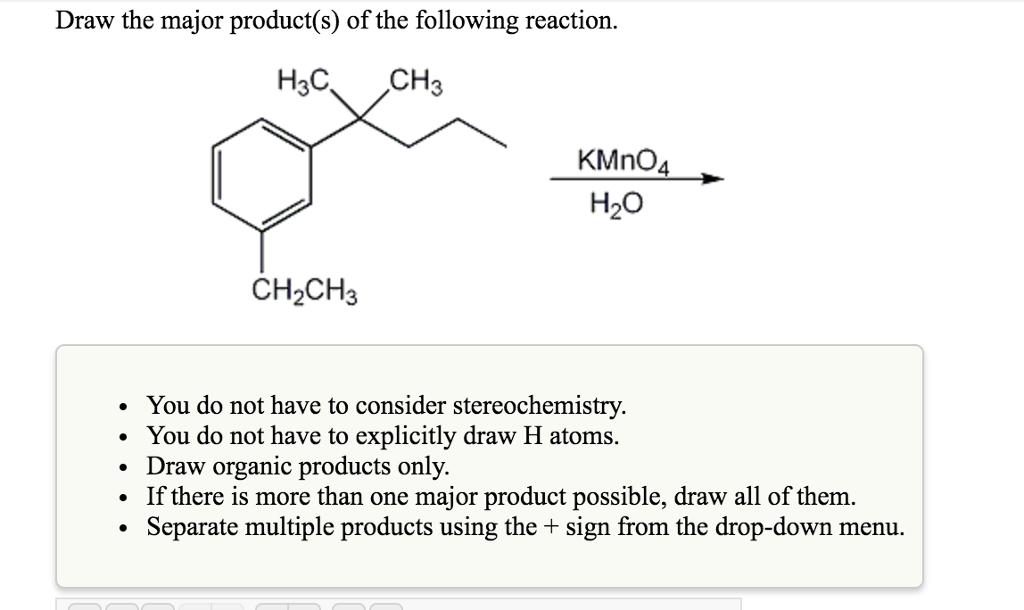
Imagine a classroom, sunlight streaming through the windows, illuminating a whiteboard filled with complex organic structures. Students huddle together, pencils scratching against paper, their brows furrowed in concentration. The air hums with a mix of anticipation and intellectual curiosity as they grapple with a seemingly simple question: "Draw the product for the following reaction."
At the heart of this seemingly simple question lies a fundamental challenge in organic chemistry – predicting the outcome of a chemical reaction. Understanding the mechanisms that drive these transformations unlocks our ability to design new molecules, synthesize life-saving drugs, and engineer materials with extraordinary properties.
The Art and Science of Organic Synthesis
Organic chemistry, the study of carbon-containing compounds, is far more than just memorizing reaction mechanisms. It's a vibrant field that blends meticulous scientific observation with a creative, almost artistic approach to problem-solving. Every reaction is a story, and every molecule a character with its own unique set of properties.
At its core, predicting the product of a reaction, like the one presented to our students, requires a solid understanding of several key concepts. These include: functional groups, the reactive parts of a molecule; reaction mechanisms, the step-by-step description of how bonds are broken and formed; and stereochemistry, the three-dimensional arrangement of atoms in space.
Building Blocks of Complexity
The question of "Draw the product for the following reaction" often involves understanding the reactivity of specific functional groups. These functional groups, like alcohols, ketones, or alkenes, dictate how a molecule will interact with other chemical species.
Consider, for instance, a reaction involving an alcohol and a carboxylic acid. This is a classic example of an esterification reaction, where the alcohol and carboxylic acid combine to form an ester and water. Knowing the characteristic reactions of these functional groups is essential to predicting the final product.
The understanding of reaction mechanisms is arguably the most critical skill in organic chemistry. A reaction mechanism provides a detailed, step-by-step account of how a chemical transformation occurs. It describes the movement of electrons, the formation of intermediates, and the breaking and forming of bonds.
Take for example the SN1 and SN2 reactions, two fundamental mechanisms in organic chemistry. These reactions describe the substitution of one atom or group by another at a saturated carbon atom. Understanding the subtle differences between these mechanisms, such as the role of the solvent and the stereochemical outcome, is crucial for predicting the products of these reactions accurately.
Stereochemistry, the study of the three-dimensional arrangement of atoms in molecules, adds another layer of complexity to reaction prediction. Molecules with the same chemical formula but different spatial arrangements can have drastically different properties and reactivities.
For example, reactions that involve chiral centers (carbon atoms bonded to four different groups) can lead to the formation of stereoisomers – molecules that are mirror images of each other (enantiomers) or non-superimposable, non-mirror images (diastereomers). Therefore, accurately depicting the stereochemical outcome of a reaction is often essential.
Real-World Applications
The ability to predict the products of organic reactions is not just an academic exercise. It has profound implications for a wide range of fields, from medicine to materials science.
In the pharmaceutical industry, for example, chemists rely heavily on their understanding of organic reactions to synthesize new drugs. Each drug molecule is carefully designed to interact with specific biological targets in the body, and its synthesis often involves a complex series of reactions.
Similarly, in materials science, the design of new polymers, plastics, and other materials relies on the ability to control the outcome of chemical reactions. Chemists can tailor the properties of these materials by carefully choosing the starting materials and reaction conditions.
"Organic chemistry is essentially the chemistry of life. Understanding its principles allows us to manipulate and create molecules that can improve our lives in countless ways," explains Dr. Anya Sharma, a professor of organic chemistry at Stanford University.
Consider the synthesis of aspirin, a widely used pain reliever and anti-inflammatory drug. The synthesis involves the reaction of salicylic acid with acetic anhydride to form acetylsalicylic acid (aspirin) and acetic acid. Understanding the mechanism of this reaction allows chemists to optimize the reaction conditions and produce aspirin efficiently and safely.
The development of new cancer therapies often relies on the synthesis of complex organic molecules that selectively target cancer cells. These molecules are designed to disrupt specific cellular processes, such as DNA replication or protein synthesis, leading to the death of cancer cells. The ability to predict the outcome of organic reactions is crucial for designing and synthesizing these life-saving drugs.
Beyond the Classroom: A Continuous Journey
The journey to master the skill of "Draw the product for the following reaction" extends far beyond the classroom. It requires continuous learning, experimentation, and a willingness to embrace the challenges and uncertainties that come with scientific inquiry.
Many resources are available to help students and researchers develop their skills in organic chemistry. Textbooks, online courses, and interactive simulations provide valuable tools for learning and practicing reaction mechanisms. Furthermore, scientific journals and conferences offer opportunities to stay up-to-date with the latest advances in the field.
Modern computational tools, such as molecular modeling software, have revolutionized the way chemists study and predict reaction outcomes. These tools allow chemists to simulate chemical reactions and visualize the structures of molecules, providing valuable insights into reaction mechanisms and stereochemical outcomes.
The ability to predict the products of organic reactions is a valuable skill that opens doors to many exciting career paths. Organic chemists are employed in a wide range of industries, including pharmaceuticals, biotechnology, materials science, and environmental science.
Moreover, the skills developed in organic chemistry, such as problem-solving, critical thinking, and attention to detail, are highly transferable and valuable in any field. In a world that is increasingly reliant on technology and innovation, the ability to think critically and solve complex problems is essential for success.
Solving the simple prompt, "Draw the product for the following reaction", might seem like an isolated academic exercise. However, it's a gateway to a deeper understanding of the world around us and a powerful tool for creating a better future.
So, the next time you see that seemingly simple question, embrace the challenge, engage your curiosity, and remember that you are not just drawing a product; you are unlocking the secrets of the molecular world.
